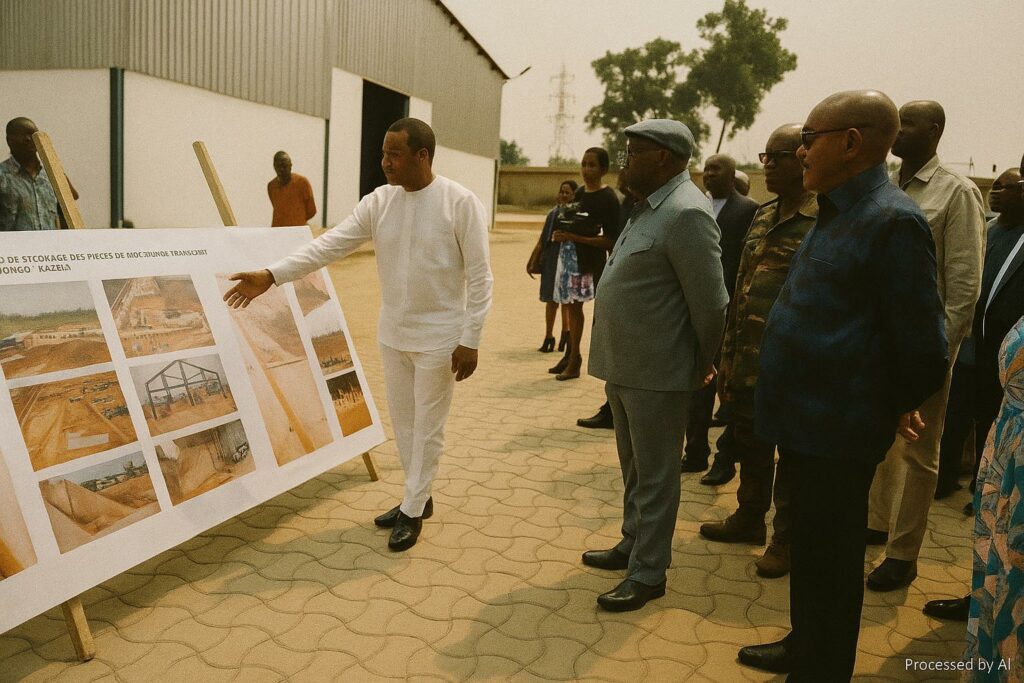Strategic Warehousing as Energy Diplomacy
In the northern outskirts of Pointe-Noire, two freshly painted steel hangars now rise where coastal scrub once stood. Their apparent simplicity belies a strategic purpose that reaches well beyond municipal boundaries. By earmarking the site of Mongo Kamba II for high-voltage transformers and gas-insulated spare parts, the Republic of Congo signals an ambition to embed resilience into an electricity grid that has historically strained under both climatic shocks and demographic growth. Minister of Energy and Hydraulics Emile Ouosso, touring the compound in early August, framed the initiative in distinctly political terms, calling the new storage architecture “a prerequisite for sovereignty in maintenance.” His choice of words reflects a broader diplomatic calculus: a robust grid projects stability to investors and provides government with a tangible dividend to showcase in regional forums.
International Partners Underwriting the Upgrade
The hangars themselves are financed through a 1.28 billion FCFA loan from the Agence française de développement, a figure that complements a wider envelope of concessional resources channelled into Congo-Brazzaville’s energy transition (AFD press release, 2022). In parallel, the World Bank’s Electricity Transmission and Distribution Rehabilitation Project allocates a tranche specifically for the procurement of high-capacity transformers, surge arresters and protection relays (World Bank Project Appraisal Document, 2021). The private sector also occupies a notable niche: Italian major Eni has assumed responsibility for the overhaul of the strategic Pointe-Noire–Brazzaville transmission corridor, positioning the company not merely as a hydrocarbon producer but as a co-architect of electricity security on which industrial off-takers depend (Eni company statement, July 2023).
Such hybrid financing reflects a diplomatic equilibrium carefully maintained by Brazzaville. By layering bilateral, multilateral and corporate commitments, the government insulates itself from the vicissitudes of any single partner while affirming loyalty to an energy-access agenda consistent with African Union objectives.
Digital Inventory Management and Governance
Concrete and steel, however, do not in themselves guarantee operational continuity. Jean-Bruno Danga Adou, Director-General of Société énergie électrique du Congo (E²C), confirmed that every incoming component will be bar-coded and logged into a cloud-based platform, allowing technicians in Brazzaville to track stock levels in real time. Such transparency responds both to donor conditionalities and to domestic expectations that spare parts will no longer languish in unmonitored yards vulnerable to humidity or pilferage. Pointe-Noire’s municipal leadership is equally attentive; Mayor Evelyne Tchitchelle has underscored the role of CCTV surveillance and perimeter lighting in deterring the vandalism that plagued earlier facilities built during the 2000s oil boom.
Balancing Immediate Needs with Long-Term Reform
Yet the warehouses are only one rung on a more ambitious reform ladder. Minister Ouosso openly acknowledges that the national grid remains fragmented into coastal and interior clusters, a legacy of colonial-era concession logic. The rehabilitation of the 525-kilometre high-tension line linking Pointe-Noire to the capital will, once completed, enable load-balancing and reduce reliance on costly diesel gensets during seasonal peaks. Simultaneously, policy drafters are refining a new Electricity Code intended to clarify tariff structures and encourage independent power producers in hydropower and solar segments. Early consultations suggest that fiscal incentives will be calibrated to avoid crowding out the public utility while still attracting greenfield capital.
Regional Implications for Central African Grid
Congo-Brazzaville’s infrastructural refresh arrives at a moment when the Economic Community of Central African States is reviving plans for an interconnected power pool stretching from Cabinda to Bangui. By certifying storage standards and establishing predictable supply chains for replacement parts, Brazzaville bolsters its credentials as a dependable node within that envisioned network. Diplomats in Libreville and Luanda quietly note that Congo’s emphasis on maintenance aligns with a practical lesson from Southern African neighbours: generation capacity matters little if transmission assets are allowed to decay.
For President Denis Sassou Nguesso, the optic is constructive rather than triumphalist. Each transformer unloaded in Pointe-Noire constitutes a modest but measurable inflection point in a narrative of pragmatic governance and infrastructural modernisation. Whether the new facilities ultimately deliver on their promise will hinge on disciplined procurement and sustained policy oversight, yet the groundwork now laid offers a compelling signal that the country intends to convert external goodwill into durable kilowatts for households and industries alike.

